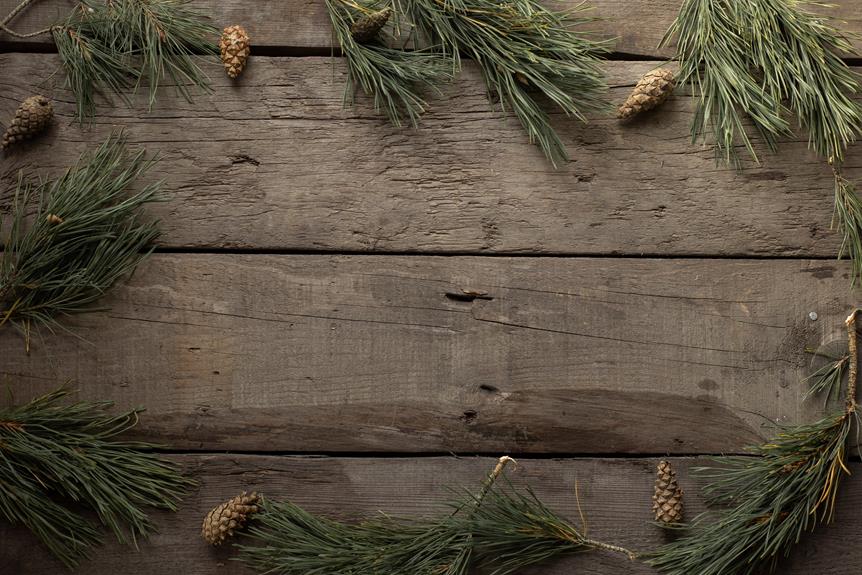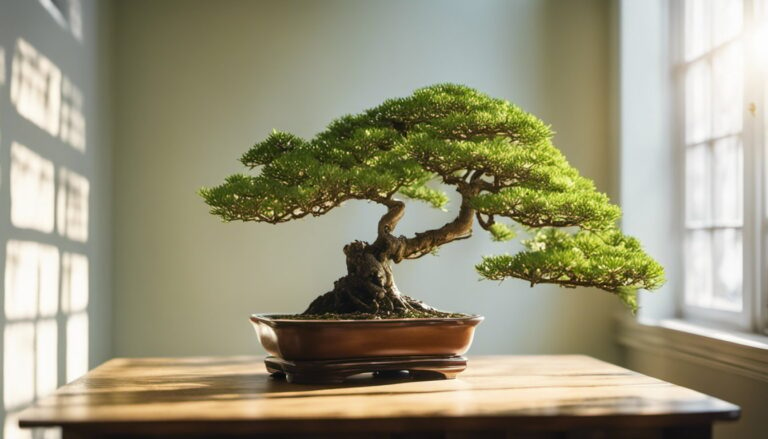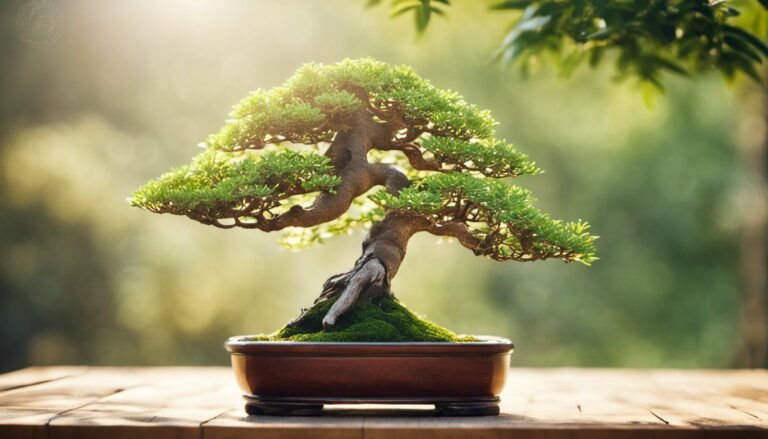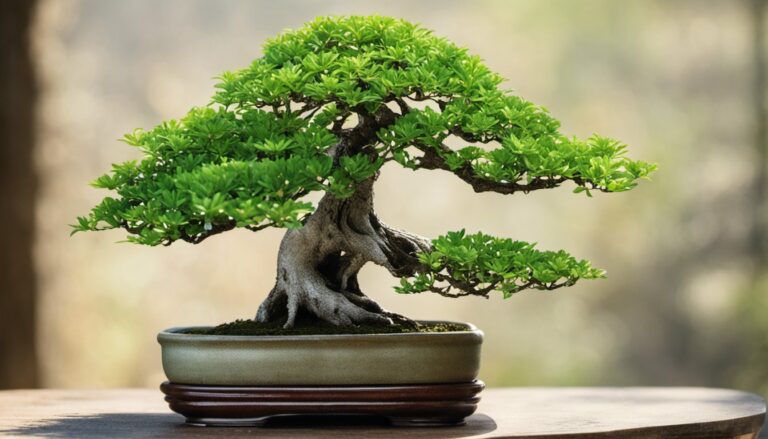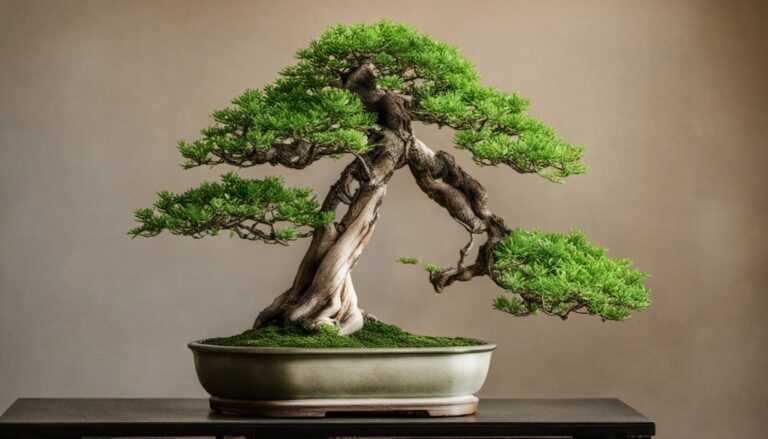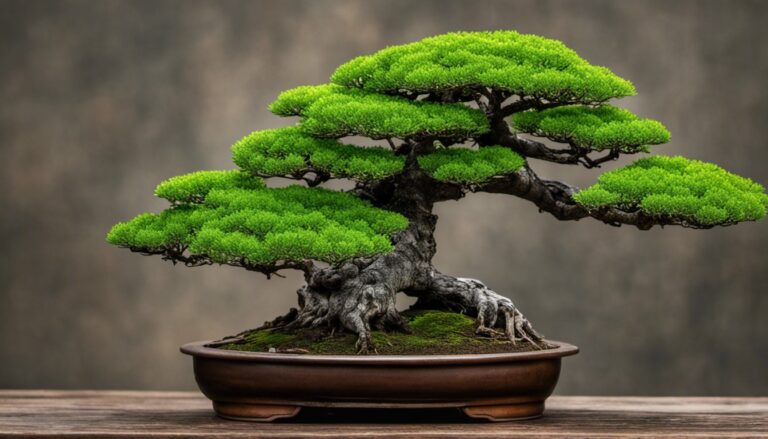Master the Art of Scots Pine Bonsai
Are you ready to dive into the world of Scots Pine Bonsai and master the art of cultivation? If you're passionate about bonsai and up for a new challenge, then this is the perfect opportunity for you.
In this article, you'll uncover the secrets to training and caring for a Scots Pine Bonsai. From removing weeds and moss to wiring and positioning, you'll learn all the essential techniques needed to shape and mold this versatile tree into various bonsai styles.
Although training can be a bit tricky due to the needle-like leaves, don't worry! With constant care and attention, you'll achieve stunning results.
So, get ready to unleash your artistic potential and immerse yourself in the world of Scots Pine Bonsai.
Key Takeaways
- Scots pine bonsai can be trained into various styles, such as moyogi, windblown, and cascading.
- Training a Scots pine bonsai requires constant care in terms of watering, sunlight, temperature, pruning, and debugging.
- Pruning should be done between August and September to allow the tree to heal properly and avoid removing valuable nutrients from the sap.
- Designing a rough idea on paper before pruning or wiring can help guide the training process and modify the design as the tree grows.
Scots Pine Bonsai Training Techniques
To master the art of Scots Pine Bonsai, you need to understand the training techniques involved. One important technique is to remove weeds and moss from the topsoil to ensure the bonsai's health.
Additionally, it's crucial to remove old or elongated pines to maintain the desired shape. Wiring the bonsai into place is another technique that helps shape and style the tree.
Once trained, it's important to place the bonsai in a brightly lit outdoor area, avoiding shady spots. Scots Pine Bonsai requires constant care in terms of watering, sunlight, temperature, pruning, and debugging.
Advantages and Disadvantages of Scots Pine Bonsai
While there are several advantages and disadvantages to cultivating Scots Pine Bonsai, one key advantage is its versatility in being molded into various bonsai styles. Scots Pine Bonsai can be trained into different styles, such as moyogi, windblown, and cascading, allowing for creative expression. Another advantage is its longevity. With proper care, Scots Pine Bonsai can live for many years, providing a long-lasting bonsai experience. Additionally, Scots Pine Bonsai is hardy and tolerant of a wide range of temperatures, making it suitable for different climates. Its rugged appearance, with twisted branches and needle-like leaves, adds a unique charm to any bonsai collection.
However, there are also some disadvantages to consider. One disadvantage is that Scots Pine Bonsai can be challenging to train. The needle-like leaves make it difficult to shape and wire. Another disadvantage is the demanding care requirements. Scots Pine Bonsai requires constant attention to watering, sunlight, temperature, pruning, and debugging. Additionally, pruning can be difficult due to the tree holding a lot of sap, making it challenging to prune in early spring. Finally, growing Scots Pine Bonsai from scratch and training it properly takes time and patience, making it a time-consuming endeavor.
Timing for Scots Pine Bonsai Training
Proper timing is crucial for the health and success of training your Scots Pine Bonsai. When it comes to pruning, it should be done between August and September. Pruning earlier may remove valuable nutrients from the tree's sap, as coniferous trees like Scots pine hold a lot of sap. By pruning at the right time, you allow the tree to heal properly and minimize the risk of infection. This timing is essential for the overall health of your bonsai.
Additionally, keep in mind that other training techniques, such as wiring and positioning, can be done throughout the year, but it's important to consider the growth cycle and avoid stressing the tree during periods of high growth. By understanding the specific timing requirements for Scots Pine Bonsai training, you can ensure the best results for your bonsai's health and development.
Designing Your Scots Pine Bonsai
When designing your Scots Pine Bonsai, consider drafting a rough idea on paper to guide the pruning and wiring process. This will help you visualize the final outcome and make necessary adjustments as the tree grows.
Here are some key points to keep in mind when designing your Scots Pine Bonsai:
- Scots pine bonsai can be molded into various styles, such as moyogi, windblown, and cascading. Choose a style that complements the natural characteristics of the tree.
- Modify the design as the tree grows and develops. Bonsai is a living art form, so it's important to allow for flexibility and adaptability in your design.
- Having a design goal helps guide the training process. Keep in mind the overall shape, proportions, and balance you want to achieve.
- Don't be afraid to experiment and take risks. Bonsai is a creative endeavor, and sometimes the most unique and beautiful designs come from thinking outside the box.
Maintenance and Care for Scots Pine Bonsai
To properly care for your Scots Pine Bonsai, regular maintenance is essential. De-weeding and repotting your bonsai are crucial tasks that should be done annually. Removing weeds and moss from the topsoil helps maintain the health of the tree by preventing competition for nutrients.
Additionally, repotting allows for the replenishment of nutrients in the soil. Trimming and pruning techniques should also be employed to shape and maintain the desired form of the bonsai. Wiring and positioning the branches is another important aspect of maintenance, as it helps achieve the desired design.
It's also important to consider the sunlight and winter care requirements of your Scots Pine Bonsai. Regular maintenance and health checks should be conducted to ensure the well-being of your bonsai.
Conclusion
In conclusion, mastering the art of Scots Pine Bonsai requires dedication and patience, but the results are well worth the effort.
By following the training techniques, timing guidelines, and maintenance practices outlined in this article, you'll be able to shape and mold your Scots Pine Bonsai into a stunning masterpiece.
Remember to provide constant care and attention to ensure the health and vitality of your bonsai.
So, embrace the challenges and unlock your artistic potential with the versatile and beautiful Scots Pine Bonsai.

